__02654.original.jpg)
-

AA 3.2 Volt 600 mAh LiFePO4 14500 Battery
$8.39As low as:- Buy in bulk and save
Bulk discount rates
Below are the available bulk discount rates for each individual item when you purchase a certain amount
- Buy 2 - 8 and pay only $8.39 each
- Buy 9 - 26 and pay only $7.99 each
- Buy 27 - 87 and pay only $7.09 each
- Buy 88 or above and pay only $7.09 each
-

1/2 D NiMH Flat Top Battery (3500 mAh)
$8.69As low as:- Buy in bulk and save
Bulk discount rates
Below are the available bulk discount rates for each individual item when you purchase a certain amount
- Buy 2 - 9 and pay only $8.69 each
- Buy 10 - 24 and pay only $8.19 each
- Buy 25 - 40 and pay only $7.99 each
- Buy 41 - 161 and pay only $7.79 each
- Buy 162 or above and pay only $7.79 each
-

Sub C NiMH Battery (3500 mAh)
$8.69As low as:- Buy in bulk and save
Bulk discount rates
Below are the available bulk discount rates for each individual item when you purchase a certain amount
- Buy 2 - 7 and pay only $8.69 each
- Buy 8 - 12 and pay only $8.09 each
- Buy 13 - 21 and pay only $7.79 each
- Buy 22 - 33 and pay only $7.69 each
- Buy 34 - 67 and pay only $7.49 each
- Buy 68 or above and pay only $7.49 each
-

Sub C NiMH Battery with Tabs (3300 mAh)
$8.69As low as:- Buy in bulk and save
Bulk discount rates
Below are the available bulk discount rates for each individual item when you purchase a certain amount
- Buy 2 - 7 and pay only $8.69 each
- Buy 8 - 12 and pay only $8.49 each
- Buy 13 - 20 and pay only $8.19 each
- Buy 21 - 32 and pay only $8.09 each
- Buy 33 - 64 and pay only $7.79 each
- Buy 65 or above and pay only $7.79 each
-

-

C NiMH Battery (4000 mAh)
$8.89As low as:- Buy in bulk and save
Bulk discount rates
Below are the available bulk discount rates for each individual item when you purchase a certain amount
- Buy 2 - 9 and pay only $8.89 each
- Buy 10 - 39 and pay only $7.99 each
- Buy 40 - 78 and pay only $7.49 each
- Buy 79 or above and pay only $7.49 each
-

4/3 A (F) NiMH Battery with Tabs (3800 mAh)
$9.09As low as:- Buy in bulk and save
Bulk discount rates
Below are the available bulk discount rates for each individual item when you purchase a certain amount
- Buy 2 - 7 and pay only $9.09 each
- Buy 8 - 23 and pay only $8.69 each
- Buy 24 - 38 and pay only $8.39 each
- Buy 39 - 77 and pay only $8.09 each
- Buy 78 - 154 and pay only $7.69 each
- Buy 155 or above and pay only $7.69 each
-
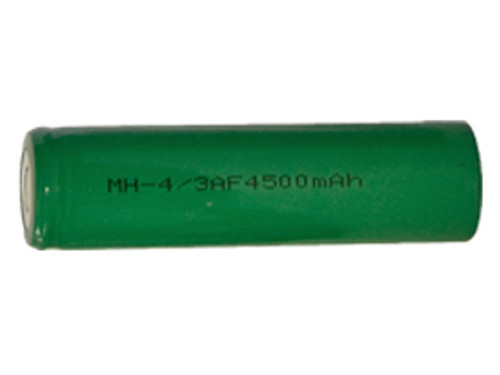
4/3 AF NiMH Flat Top Battery (4500 mAh)
$9.39As low as:- Buy in bulk and save
Bulk discount rates
Below are the available bulk discount rates for each individual item when you purchase a certain amount
- Buy 2 - 8 and pay only $9.39 each
- Buy 9 - 22 and pay only $8.89 each
- Buy 23 - 37 and pay only $8.69 each
- Buy 38 - 149 and pay only $8.39 each
- Buy 150 or above and pay only $8.39 each
-
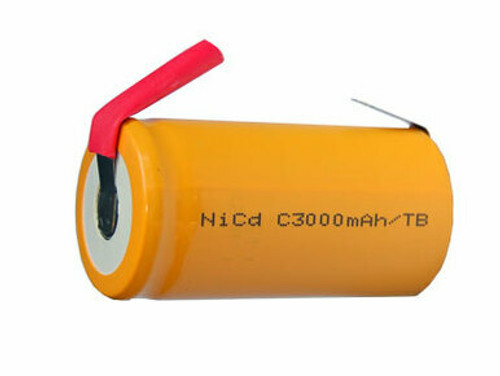
C NiCd Battery with Tabs (3000 mAh)
$9.59As low as:- Buy in bulk and save
Bulk discount rates
Below are the available bulk discount rates for each individual item when you purchase a certain amount
- Buy 2 - 7 and pay only $9.59 each
- Buy 8 - 21 and pay only $9.19 each
- Buy 22 - 36 and pay only $8.89 each
- Buy 37 - 72 and pay only $8.69 each
- Buy 73 - 145 and pay only $8.09 each
- Buy 146 or above and pay only $8.09 each
-

330H 1.2 Volt NiMH Button Battery
$9.79As low as:- Buy in bulk and save
Bulk discount rates
Below are the available bulk discount rates for each individual item when you purchase a certain amount
- Buy 2 - 7 and pay only $9.79 each
- Buy 8 - 33 and pay only $6.89 each
- Buy 34 - 94 and pay only $6.39 each
- Buy 95 or above and pay only $6.39 each
-

-

-

-

Sub C Powerizer NiMH Battery (4200 mAh)
$9.79As low as:- Buy in bulk and save
Bulk discount rates
Below are the available bulk discount rates for each individual item when you purchase a certain amount
- Buy 2 - 6 and pay only $9.79 each
- Buy 7 - 11 and pay only $8.89 each
- Buy 12 - 18 and pay only $8.79 each
- Buy 19 - 30 and pay only $8.69 each
- Buy 31 - 60 and pay only $8.39 each
- Buy 61 or above and pay only $8.39 each
-

Sub C Powerizer NiMH Battery (4500 mAh)
$9.99As low as:- Buy in bulk and save
Bulk discount rates
Below are the available bulk discount rates for each individual item when you purchase a certain amount
- Buy 2 - 6 and pay only $9.99 each
- Buy 7 - 10 and pay only $9.39 each
- Buy 11 - 18 and pay only $9.19 each
- Buy 19 - 29 and pay only $9.09 each
- Buy 30 - 58 and pay only $8.79 each
- Buy 59 or above and pay only $8.79 each
-

Sub C Powerizer NiMH Battery with Tabs (4200 mAh)
$9.99As low as:- Buy in bulk and save
Bulk discount rates
Below are the available bulk discount rates for each individual item when you purchase a certain amount
- Buy 2 - 6 and pay only $9.99 each
- Buy 7 - 10 and pay only $9.59 each
- Buy 11 - 17 and pay only $9.49 each
- Buy 18 - 28 and pay only $9.19 each
- Buy 29 - 56 and pay only $8.89 each
- Buy 57 or above and pay only $8.89 each
-

Sub C Powerizer NiMH Battery with Tabs (4500 mAh)
$10.29As low as:- Buy in bulk and save
Bulk discount rates
Below are the available bulk discount rates for each individual item when you purchase a certain amount
- Buy 2 - 6 and pay only $10.29 each
- Buy 7 - 10 and pay only $9.99 each
- Buy 11 - 16 and pay only $9.89 each
- Buy 17 - 27 and pay only $9.59 each
- Buy 28 - 54 and pay only $9.39 each
- Buy 55 or above and pay only $9.39 each
-
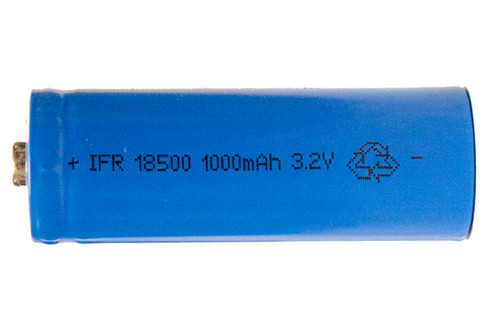
3.2 Volt 18500 1000 mAh LifeP04 Battery (Button Top)
$10.59As low as:- Buy in bulk and save
Bulk discount rates
Below are the available bulk discount rates for each individual item when you purchase a certain amount
- Buy 2 - 6 and pay only $10.59 each
- Buy 7 - 19 and pay only $9.99 each
- Buy 20 - 65 and pay only $8.89 each
- Buy 66 or above and pay only $8.89 each
-
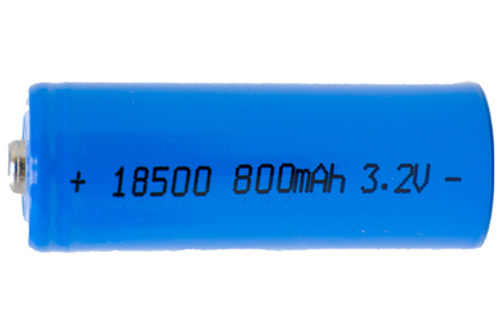
18500 3.2 Volt LiFePO4 Battery (800 mAh)
$10.69As low as:- Buy in bulk and save
Bulk discount rates
Below are the available bulk discount rates for each individual item when you purchase a certain amount
- Buy 2 - 6 and pay only $10.69 each
- Buy 7 - 19 and pay only $10.19 each
- Buy 20 - 65 and pay only $9.09 each
- Buy 66 or above and pay only $9.09 each
-
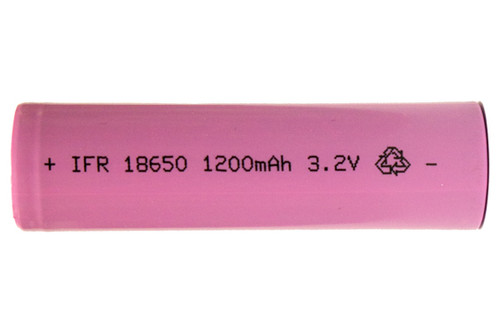
3.2 Volt 18650 LiFePO4 Battery (1200 mAh)
$11.19As low as:- Buy in bulk and save
Bulk discount rates
Below are the available bulk discount rates for each individual item when you purchase a certain amount
- Buy 2 - 6 and pay only $11.19 each
- Buy 7 - 19 and pay only $10.29 each
- Buy 20 - 65 and pay only $9.59 each
- Buy 66 or above and pay only $9.59 each
Rechargeable batteries have revolutionized the way we power our devices. They are a cost-effective and environmentally friendly alternative to disposable batteries, and they are available in a range of sizes and chemistries.
Rechargeable batteries are a great investment for anyone who uses a lot of batteries. They are more expensive than disposable batteries upfront, but they will save you money in the long run because they can be recharged hundreds or even thousands of times. Plus, they are better for the environment because you won't have to throw away as many batteries.
NiMH Rechargeable Batteries
NiMH (Nickel-Metal Hydride) rechargeable batteries are a popular choice for a wide range of applications. They have a higher energy density than NiCd batteries, which means they can store more energy and last longer between charges. They also have a longer shelf life than NiCd batteries, which means they will retain their charge for longer when not in use.
AA NiMH rechargeable batteries are one of the most popular sizes of rechargeable batteries. They are commonly used in electronic devices such as cameras, flashlights, and toys. AAA NiMH rechargeable batteries are also popular and are often used in remote controls, wireless mice, and other small devices. C and D NiMH rechargeable batteries are less common but are still useful for applications that require a lot of power, such as power tools.
NiCd Rechargeable Batteries
NiCd (Nickel-Cadmium) rechargeable batteries were once the most popular type of rechargeable battery, but they have fallen out of favor in recent years due to their environmental impact. NiCd batteries contain toxic cadmium, which is harmful to the environment when not disposed of properly.
Despite this, NiCd rechargeable batteries are still available and are commonly used in power tools and emergency lighting systems. They have a lower energy density than NiMH batteries, but they can deliver a higher current, making them ideal for applications that require a lot of power.
AA NiCd rechargeable batteries are the most popular size of NiCd batteries, but they are becoming less common as NiMH and Lithium-ion batteries become more popular. AAA NiCd rechargeable batteries are also available, but they are less common than AA NiCd batteries.
Lithium Ion Rechargeable Batteries
Lithium Ion rechargeable batteries are the most popular type of rechargeable battery today. They have a much higher energy density than NiCd or NiMH batteries, which means they can store more energy and last longer between charges. They also have a longer lifespan than NiCd or NiMH batteries, which means they can be recharged more times before they need to be replaced.
AA Lithium Ion rechargeable batteries are becoming more popular, especially in high-drain devices such as digital cameras and LED flashlights. AAA Lithium Ion rechargeable batteries are also available but are less common than AA Lithium-ion batteries. C and D Lithium Ion rechargeable batteries are available, but they are less common than AA Lithium Ion batteries.
Oddball Sizes
In addition to the most popular sizes of rechargeable batteries, there are also some oddball sizes available. These batteries are less common but are still useful for certain applications. For example, 1/3 AA rechargeable batteries are commonly used in cordless phones and wireless microphones. 2/3 AA rechargeable batteries are used in some small LED flashlights, and 4/5 AA rechargeable batteries are used in some remote-controlled cars.
Button Top and Flat Top
When it comes to battery pack assembly, there are two main types of rechargeable batteries: button top and flat top. Button top rechargeable batteries have a small protruding button on the positive end of the battery, while flat top rechargeable batteries have a flat positive end.
Button top rechargeable batteries are commonly used in devices that require a tight fit, such as some flashlights and cameras. Flat top rechargeable batteries are commonly used in devices that require a spring or other mechanism to hold the battery in place, such as some electronic toys and games.
Battery pack assembly involves connecting multiple rechargeable batteries together to create a larger battery pack with a higher voltage or capacity. This is commonly done in applications such as electric vehicles, solar power systems, and emergency backup power systems.
When assembling a battery pack, it is important to ensure that all of the batteries have the same voltage and capacity to prevent uneven discharge and reduce the risk of damage to the batteries. It is also important to use the correct type of battery for the application, such as using Lithium-ion batteries in high-power applications and NiMH batteries in low-power applications.
Rechargeable batteries are a great investment for anyone who uses a lot of batteries. They are more cost-effective and environmentally friendly than disposable batteries, and they are available in a range of sizes and chemistries to suit a wide range of applications. Whether you need AA, AAA, C, D, or even an oddball size, there is a rechargeable battery available that will suit your needs. And if you need to assemble a battery pack, make sure to use the correct type of battery and ensure that all of the batteries have the same voltage and capacity for optimal performance and longevity.


